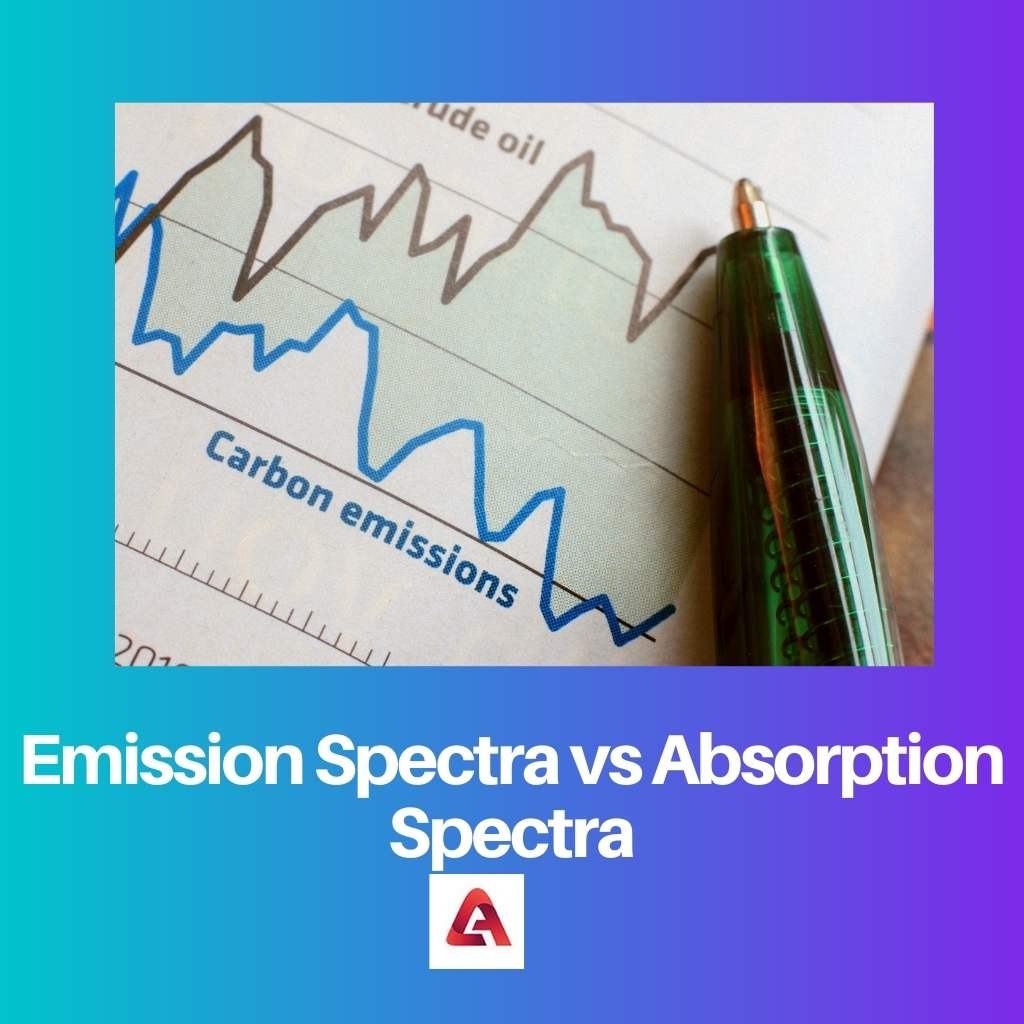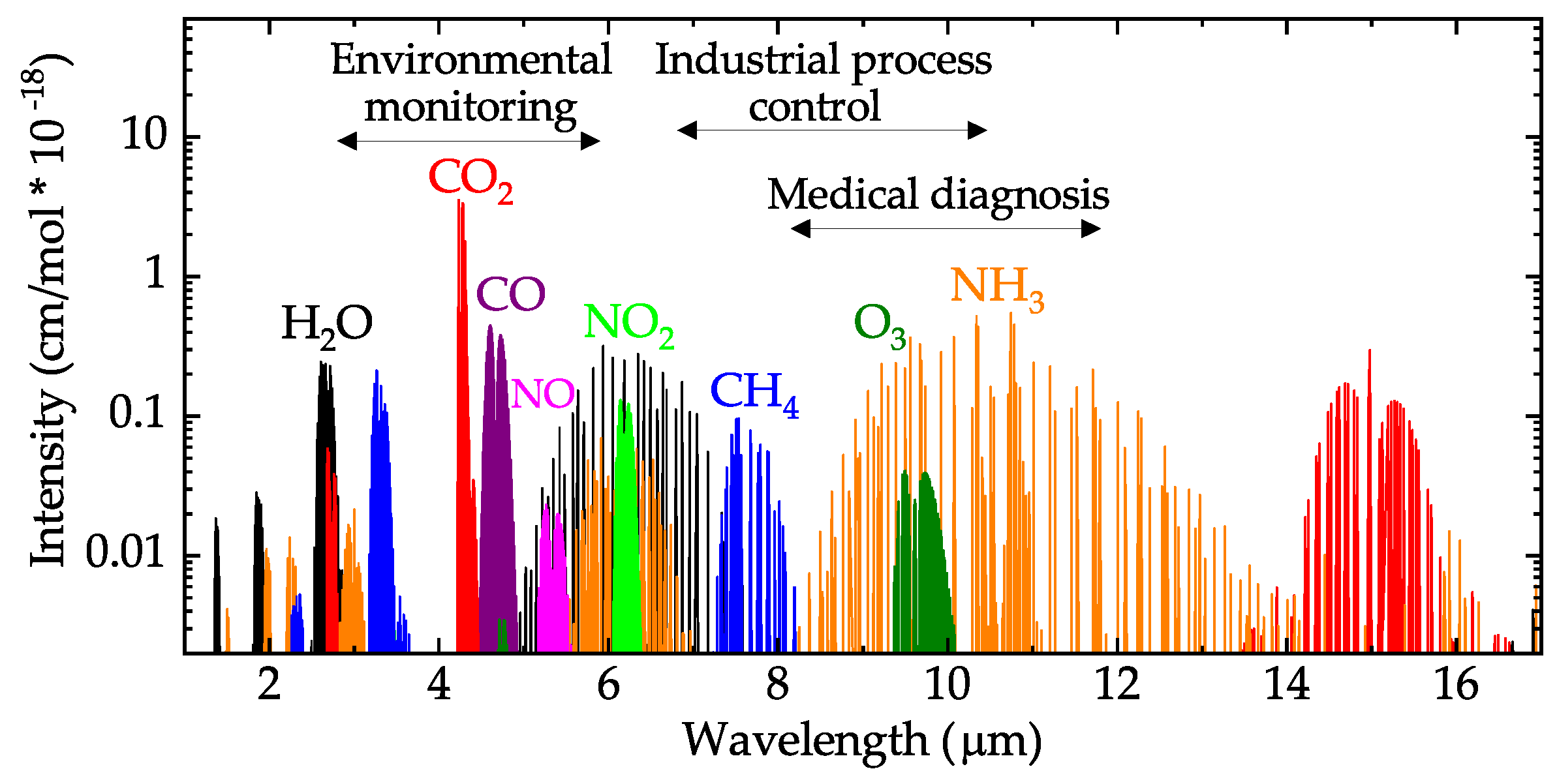The spectrum is the wave of radiations emitted or absorbed by the element or substance. The frequency of the energy that is produced by the vibrations of electrons determines the regions of the spectra.
The is not one region that may fall in the spectra. The regions of the spectra can be taken from the gamma rays to the Infrared rays. The frequency regions help to determine the unknown element and also the structure of the element.
Key Takeaways
- Emission spectra display the wavelengths emitted by a light source, while absorption spectra show the wavelengths absorbed by a substance.-`
- Emission spectra help identify elements or compounds in a sample, whereas absorption spectra provide information about a substance’s chemical structure and concentration.
- Both spectra are valuable tools in analytical chemistry and spectroscopy for understanding the properties of materials.
Emission Spectra vs Absorption Spectra
Emission spectra are produced when excited atoms or molecules release energy in the form of photons and consist of bright lines on a dark background. Absorption Spectra is produced when a sample absorbs specific wavelengths of light, resulting in dark lines on a continuous spectrum.

The Emission Spectra occur when a light ray falls on the element, and the electrons within the element vibrate. The vibration of the electrons leads to the jumping of electrons from the ground state to the higher level.
When the electron comes back to the ground state, the energy emitted by the electron leads to the spectra.
Sometimes, one frequency is emitted, while many times, the electron reaches the ground state by passing through various shells, thus forming a band of spectra.
The Absorption Spectra occurs when a light ray falls on the element or the compound, and the atoms absorb a certain range of frequency. The absorption of a certain range of frequency from the light falling in the compound.
The gap is formed at the frequency which is being absorbed and the rest emitted. Therefore, black lines form at the frequency of the light absorbed. Hence the absorption spectra consist of the dark and light bands.
Comparison Table
| Parameters of Comparison | Emission Spectra | Absorption Spectra |
|---|---|---|
| Definition | The emission spectra are in the spectrum where the atoms or the constituents in the substance emit a certain frequency of the rays and form a spectrum. | The absorption spectra are the spectrum produced when the element of the constituents of a substance absorbs the energy of a certain frequency. |
| Mechanism | The electron jumps from ground level to a higher energy shell. On returning to the ground state the energy is released of a certain frequency thus, forming a spectrum. | The light falls on the substance and the frequency of a certain range is absorbed by the constituents. Thus forming an absorption spectrum. |
| Band Formed | The colored bands are produced in the Emission spectra. | The light and dark bands are formed in the absorption spectra. |
| Advantage | The Emission spectra can be used for knowing the structure of the compound or element. | The absorption spectra can determine the absorbance of the atoms within the substance. |
| Uses | The emission spectra are very helpful in knowing the constituents of a substance. | The frequency of the spectra can help us determine the total number of atoms present within the constituent. |
What is Emission Spectra?
As the name suggests, the Emission spectra are the spectra produced when the light is emitted. The emission spectra take place when the electron present with the shell gets excited and jumps from the ground state to the high energy level.
When they come back to the ground state, the electrons release energy. The release of energy thus forms a band called emission spectra.
The emission spectra may take place when the energy is first provided to the atom. The energy is provided as heat or light, which may also occur when the reaction occurs.
The d and f block atoms have the feature to show transitions within the d and f blocks. Thus, these items are determined using the emission spectra produced by them.
The emission spectra were first studied in the hydrogen atom as it has only one electron in its shell. Thus, the study was quite easy. The spectrum that was produced varied from UV, Visible, and Infrared regions.
The visible light region can be seen as the seven bands of color, while the UV and Infrared rays are detected and not seen.

What is Absorption Spectra?
The absorption spectra in spectra are produced when the element or atom absorbs a specific frequency of light.
The monochromatic source light is used for the spectra as it causes less confusion and is held onto determining the particular range of frequency being absorbed.
The absorption spectra are mainly used in atom detection. The light that falls on the compound may be solid or liquid. Usually, a dilute liquid solution is taken for the experiment. The absorption spectra tell the presence of the metals in the compound.
The bands formed in the absorption spectra are the dark and light bands.
The absorption spectra are used to detect the presence of the atom in the compound. This also helps sometimes to know the amount of the atom as constituted by observing the absorbance that took place on exposure.
The Intensity of light is detected before and after falling on the compound. This technique has very much been used in both physics and chemistry.

Main Differences Between Emission and Absorption Spectra
- The Emission spectra take place when the atom emits energy, while the Absorption spectra are observed on light absorption.
- The Emission spectrum gives a band of light, and the absorption spectrum gives the dark and light bands.
- Emission spectra take place on the transition of electrons, while absorption occurs when the atom absorbs the energy.
- The Emission spectra help to determine the structure of the compound, while the Absorption spectra are used to know the presence of the compound.
- The Intensity of light is measured before and after falling on the compound on absorption spectra, whereas this is not with the emission spectra.



